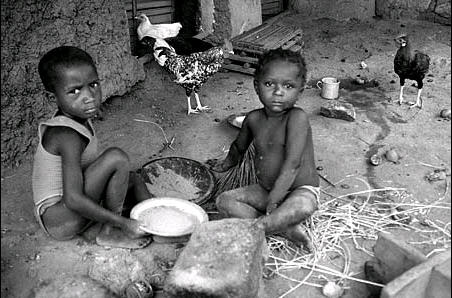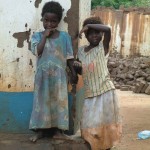Poverty
Poverty is the condition of living with serious lack of basic human needs – food, clothing, shelter, clean water, and the other necessities of life. “Fundamentally, poverty is a denial of choices and opportunities, it is a violation of human dignity…. It means insecurity, powerlessness and marginalization of individuals, households and communities. It means susceptibility to violence, and it often implies living on marginal and fragile environments” (UN).
The gap between rich and poor keeps growing within and between countries. According to Oxfam, in 2016 the richest 1% held as much wealth as the rest of the world, and the richest 62 people had as much as the bottom 50% of the global population. In United States the share of wealth held by the richest top 1% increased from 30% in 1989 to 39% in 2016; by comparison, the share held by the bottom 90% fell from 33% to 23% (Center on Budget and Policy Priorities, 2020). Almost one billion people lack enough to eat, and two billion suffer from disease caused by poor sanitation. When natural disasters and pandemic strike, or food prices rise, many more people go hungry, unsheltered or without health care or education. In the lives of people affected, poverty becomes an endless chain of disadvantage from generation to generation.
Today, we have the means for every person on earth to have sufficient food, housing, healthcare and education, but we need compassion and willingness to make that happen.

Why should we care?
- Every second someone dies of hunger.
- Poor people unable to improve their circumstances, are the most vulnerable to natural disasters, armed conflict, and political and economic oppression
- Millions of children die of malnutrition before their 5th birthday.
- Compassion is not just a feeling. It brings responsibility to help others to live healthy and secure lives.
- Poverty, distress and dispossession not only destabilize peace and security in the area directly affected but worldwide.


Fast facts
- In 2015, 10% of the world’s population or 734 million people lived on less than $1.90 a day.
- The COVID-19 pandemic may add 32 million people in Southern Asia and 26 million in sub-Saharan Africa in extreme poverty.
- Before the COVID-19 pandemic, it was estimated that 6% of the global population would still be living in extreme poverty in 2030. The pandemic likely will make that estimation greater.
- In 2016, 55% of the global population, about 4 billion people, did not have any form of social protection.
- In 2018, 8% of employed workers and their families worldwide lived in extreme poverty.
- More females and children live in extreme poverty than males. One out five children live in extreme poverty.
- 98% of the world’s undernourished people live in developing countries.
- 22,000 children die each day due to conditions of poverty.
- Three quarters of the world’s poorest people – 1.4 billion – live in rural areas and depend on agriculture and related activities for their livelihood.
- In Canada, one in seven people live in poverty. 15% of people with disabilities live in poverty, and 59% of them are women. Indigenous Peoples are overrepresented among the homeless and impoverished in all urban centres in Canada.
- In Canada, one in five children (1.3 million) live in poverty. 40% of Indigenous children live in poverty, and 60% Indigenous children on reserves live in poverty.
